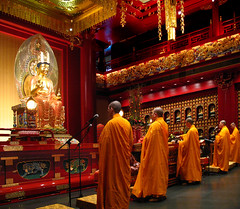Unit 1: Global Tapestry
0.0(0)
0.0(0)
Card Sorting
1/36
Earn XP
Description and Tags
Study Analytics
Name | Mastery | Learn | Test | Matching | Spaced |
|---|
No study sessions yet.
37 Terms
1
New cards
Song Dynasty
Chinese dynasty (960 - 1279 CE) that could be considered their "golden age" when China saw many important inventions. There was a magnetic compass; had a navy; traded with India and Persia; paper money, gun powder
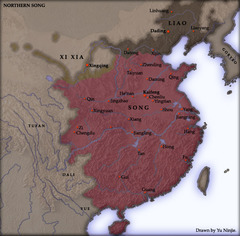
2
New cards
Confucianism
A philosophy that adheres to the teachings of the Chinese philosopher Confucius. It shows the way to ensure a stable government and an orderly society in the present world and stresses a moral code of conduct.
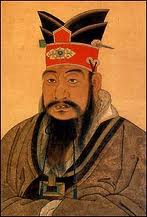
3
New cards
Filial Piety
In Confucian thought, one of the virtues to be cultivated, a love and respect for one's parents and ancestors.
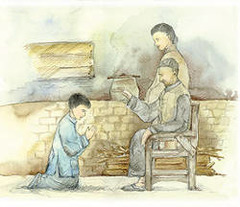
4
New cards
Neo-Confucianism
The Confucian response to Buddhism by taking Confucian and Buddhist beliefs and combining them into this. However, it is still very much Confucian in belief.
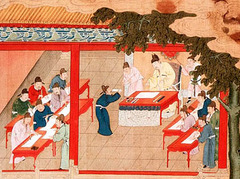
5
New cards
Theravada Buddhism
the oldest of the two major branches of Buddhism. Practiced mainly in Sri Lanka, Thailand, Burma, and Cambodia, its beliefs are relatively conservative, holding close to the original teachings of the Buddha
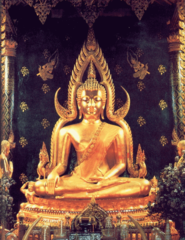
6
New cards
Mahayana Buddhism
"Great Vehicle" branch of Buddhism followed in China, Japan, and Central Asia. The focus is on reverence for Buddha and for Bodhisattva, enlightened persons who have postponed Nirvana to help others attain enlightenment. It was a more "user friendly" Buddhism that developed as Buddhism spread into East and Southeast Asia.
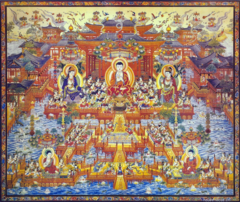
7
New cards
Tibetan Buddhism
a Buddhist doctrine that includes elements from India that are not Buddhist and elements of preexisting shamanism, a tradition of Buddhism that teaches that people can use special techniques to harness spiritual energy and can achieve nirvana in a single lifetime
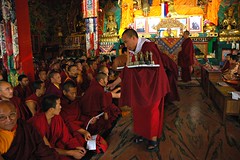
8
New cards
Champa Rice
Quick-maturing rice that can allow two harvests in one growing season; led to increased populations in Song Dynasty China. Originally introduced into Vietnam from India, it was later sent to China as a tribute gift by the Champa state (as part of the tributary system.)

9
New cards
Grand Canal
The 1,100-mile (1,700-kilometer) waterway linking the Yellow and the Yangzi Rivers. It was begun in the Han period and completed during the Sui Dynasty.
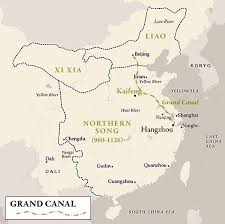
10
New cards
Flying Money
Chinese credit instrument that provided credit vouchers to merchants to be redeemed at the end of the voyage; reduced danger of robbery; early form of currency
11
New cards
Seljuk Empire
Turkic empire ruled by sultans in Persia and modern-day
Iraq (11th and 12th centuries); Established Turks as major ethnic group carrying Islam across Eurasia, along with Arabs and Persians; Demonstrated weakness of Abbasid caliphate in its later
years; sultans held real power in the empire; Helped to spread the influence of Islam throughout the region
Iraq (11th and 12th centuries); Established Turks as major ethnic group carrying Islam across Eurasia, along with Arabs and Persians; Demonstrated weakness of Abbasid caliphate in its later
years; sultans held real power in the empire; Helped to spread the influence of Islam throughout the region
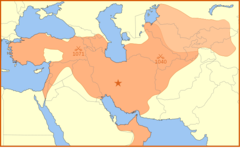
12
New cards
Delhi Sultanate
The first Islamic government established within India from 1206-1520. Controlled a small area of northern India and was centered in Delhi.
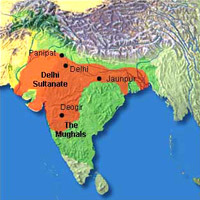
13
New cards
Abbasid Caliphate
(750-1258 CE) The caliphate, after the Umayyads, who focused more on administration than conquering. Had a bureaucracy that any Muslim could be a part of.
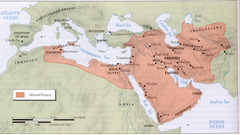
14
New cards
House of Wisdom in Baghdad
Large Islamic-based Library and learning center. Focus of conversion of Greek and Roman classics and Indian learning into Arabic. Preserved knowledge.
15
New cards
Bhakti Movement
An immensely popular development in Hinduism, advocating intense devotion toward a particular deity.
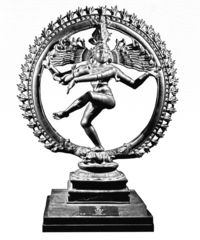
16
New cards
Sufism
An Islamic mystical tradition that desired a personal union with God--divine love through intuition rather than through rational deduction and study of the Shari'a. Followed an ascetic routine (denial of physical desire to gain a spiritual goal), dedicating themselves to fasting, prayer, meditation on the Qur'an, and the avoidance of sin.
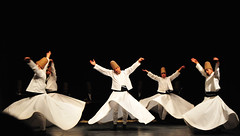
17
New cards
Feudalism
A political system in which nobles are granted the use of lands that legally belong to their king, in exchange for their loyalty, military service, and protection of the people who live on the land
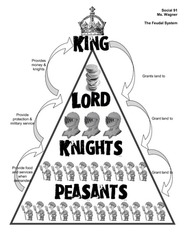
18
New cards
Vassal
a person under the protection of a feudal lord to whom he or she owes allegiance
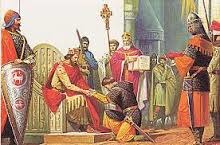
19
New cards
Serf
an agricultural laborer bound under the feudal system to work on their lord's estate.
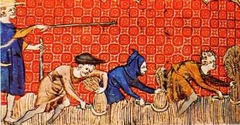
20
New cards
Manorialism
Economic system during the Middle Ages that revolved around self-sufficient farming estates where lords and peasants shared the land; the economic side of feudalism
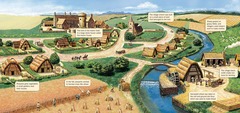
21
New cards
Great Zimbabwe
A powerful state in the African interior that apparently emerged from the growing trade in gold to the East African coast; flourished between 1250 and 1350 C.E.
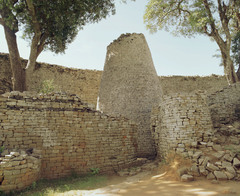
22
New cards
Cahokia
The dominant center of an important Mississippi valley mound-building culture, located near present-day St. Louis, Missouri; flourished from about 900 to 1250 C.E.
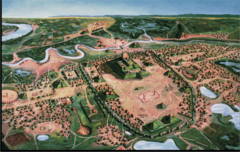
23
New cards
Maya city-states
Classical culture in Southern Mexico and Central America; contemporary with Teotihuacan; extended over broad region; featured monumental architecture, written language, calendar system, mathematical system
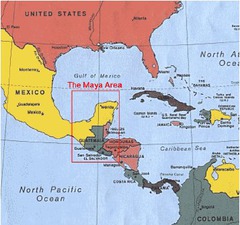
24
New cards
Meritocracy
government or the holding of power by people selected on the basis of their ability; used in China via the Civil Service Exam
25
New cards
Syncretism
The unification or blending of opposing people, ideas, or practices, frequently in the realm of religion. For example, when Christianity or Buddhism was adopted by people in a new land, they often incorporate it into their existing culture and traditions.
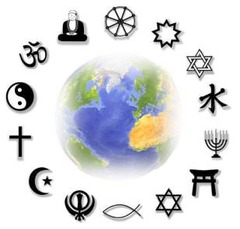
26
New cards
Zen Buddhism
(also called Chen) a Japanese school of Mahayana Buddhism emphasizing the value of meditation and intuition; illustrates the adaptations Buddhism made as it spread to new areas and interacted with different cultures
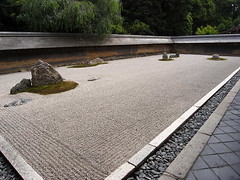
27
New cards
Greek Philosophy
the rational investigation of questions about existence and knowledge and ethics; distinguished by the ideas of Socrates, Plato, and Aristotle; preserved by the Arabs after the Roman Empire collapsed
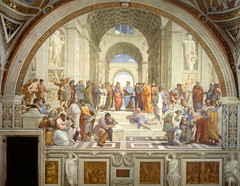
28
New cards
Mita System
economic system in Inca society where people paid taxes with their labor and what they produced; men and women were expected to contribute this labor to the state yearly
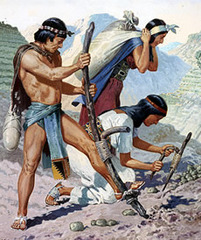
29
New cards
Chinampas
Floating gardens constructed along lake shores by the Mexica/Aztecs to increase agricultural yields.
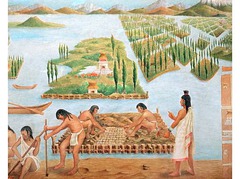
30
New cards
Waru Waru Agriculture
A form of farming used in the Inca Empire; divided the hills into terraces or flat steps almost like steps; they could then control the amount of water being put into those places; led to vastly improved agriculture for the Incas

31
New cards
three-field system
A rotational system for agriculture in which one field grows grain, one grows legumes, and one lies fallow. Restores nutrients to the soil to improve crop yields. It gradually replaced two-field system in medieval Europe.
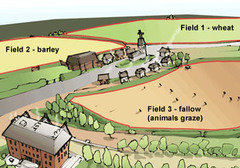
32
New cards
Crusades
A series of holy wars from 1096-1270 AD undertaken by European Christians to free the Holy Land from Muslim rule; ultimately spread culture and increased trade but were not successful
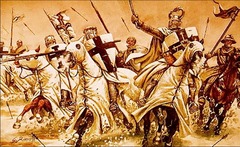
33
New cards
Renaissance
"rebirth"; following the Middle Ages, a movement that centered on the revival of interest in the classical learning of Greece and Rome; began in Florence, Italy and spread throughout Europe
34
New cards
Great Schism
in 1054, divided medieval Christianity into (Greek) and Western (Latin) branches, which later became known as the Eastern Orthodox Church and the Roman Catholic Church. Relations between East and West had long been embittered by political and ecclesiastical differences and theological disputes.
35
New cards
coercive labor
Any labor system that involves force (slavery, chattel slavery, serfdom, and indentured labor)
36
New cards
Fief
land granted by a lord to a vassal in exchange for loyalty and service
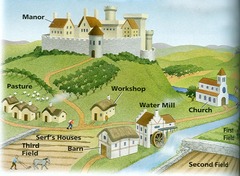
37
New cards
Buddhist Monks
religious communities where Buddha's followers stayed, studied, and meditated; both men and women could join monasteries as monks or nuns; often exempt from taxation which put strains on Chinese political systems
